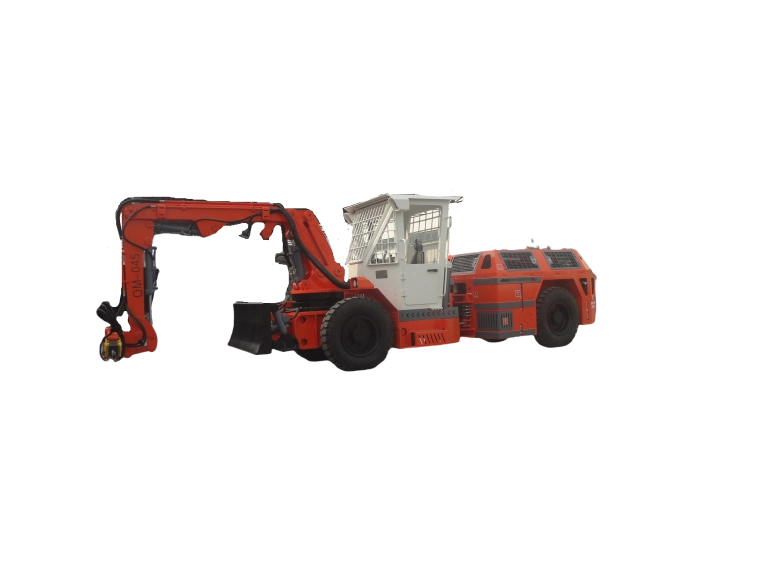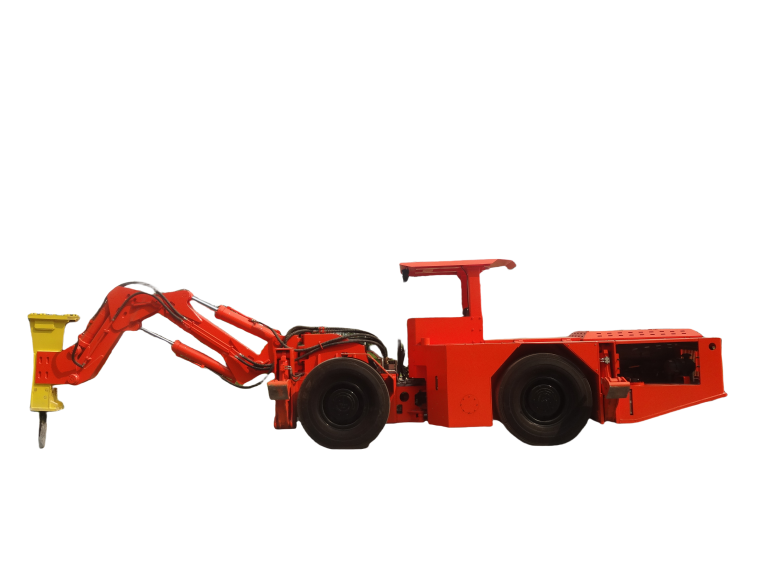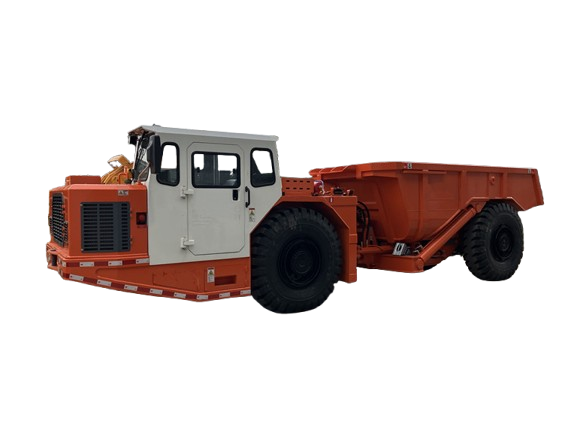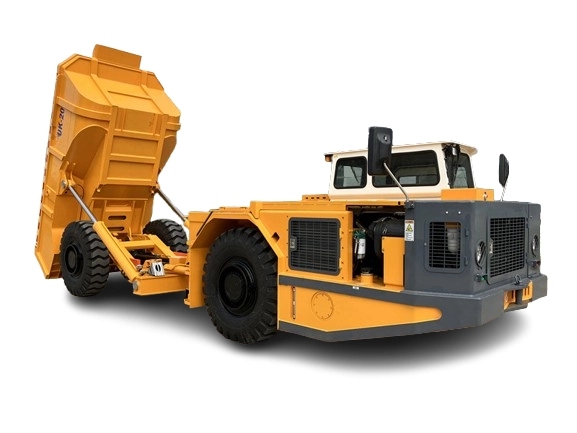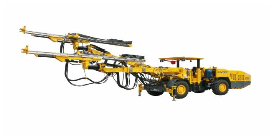Picture this: deep below the earth’s surface, teams of miners carve out tunnels and chambers, chasing valuable ore or building vital infrastructure. At the heart of that work sits the underground drill jumbo—a tough, versatile machine that blasts through rock with precision. These rigs aren’t just tools; they’re the backbone of modern mining and tunneling. But as demands grow for faster digs, safer sites, and cleaner methods, the question hangs in the air: what’s next for these workhorses? In this post, we’ll dive into the future development trend of jumbos de perforación subterránea. We’ll break down shifts in tech, operations, and mindset that could redefine how we drill underground. Whether you’re a mine manager eyeing efficiency or an engineer dreaming up tomorrow’s setups, stick around. These insights draw from real-world advances and point to a smarter, greener path forward.
What Makes Underground Drill Jumbos Tick?
Before we chase horizons, let’s ground ourselves. An underground drill jumbo is built for the grind of subsurface jobs. It rolls on tracks or wheels through narrow passages, carrying one or more booms armed with rock drills. These setups punch holes into rock faces for blasting, prepping the way for loaders and haulers. Simple in concept, but the details pack a punch.
Key Parts and How They Fit Together
Think of the jumbo as a mobile command center. The carrier base keeps it steady—often a rugged frame with low ground clearance for tight spots. Hydraulic booms swing and extend, reaching up to seven meters to hit awkward angles. At the tip? Percussion drills that hammer at 15 to 25 kilowatts, carving holes from 38 to 64 millimeters wide and up to five meters deep. Add in rod handlers that swap drill bits without much fuss, and you’ve got a rig that cuts cycle times.
Dust control matters too. Fans and sprays keep air breathable, while cabs shield operators from noise and grit. Weights hover around 20 to 50 tons, depending on the build. It’s all about balance: power without bulk, reach without wobble. In practice, these máquinas shine in metal mines, hydropower tunnels, and civil projects. They turn raw rock into workable space, one precise hole at a time.
But here’s the rub. Current designs handle the job, yet they face headwinds like high fuel use, operator fatigue, and uneven rock that chews up bits. That’s where the future development trend steps in—pushing boundaries to make drilling quicker, safer, and kinder to the planet.
Hurdles in the Depths: Why Change is Coming
Underground work is no picnic. Rock shifts without warning. Spaces cramp up fast. And every minute counts when costs stack from energy and downtime. Traditional jumbos guzzle diesel, spewing exhaust that clogs vents and hikes health risks. Operators juggle controls in dim light, eyes on gauges while dodging cave-ins. Plus, as deposits dip deeper—some over 5,000 meters by 2025—rigs must punch harder without breaking the bank.
Let’s list a few pain points:
- Energy Drain: Diesel engines burn through fuel, pushing operating costs sky-high in remote sites.
- Safety Gaps: Manual positioning leaves room for slips—literally—in unstable ground.
- Adaptability Issues: One-size-fits-all booms struggle with varied geology, from soft clay to granite slabs.
- Data Blind Spots: Without real-time feedback, teams guess at wear and tear, leading to surprise breakdowns.
These aren’t just gripes. They’re signals. Mines lose millions yearly to inefficiencies. Tunnels delay if drills falter. And regulators tighten rules on emissions and worker protection. The fix? Evolving jumbos that tackle these head-on. The future development trend isn’t about flashy add-ons. It’s about rigs that work smarter, not harder.
Trends Driving the Next Wave of Underground Drill Jumbos

Excitement builds around what’s brewing in workshops and test tunnels. From electric hearts to AI brains, these shifts promise rigs that adapt on the fly. We’ll unpack five big ones, each backed by hands-on progress.
Automation: Hands Off, Eyes On
Automation tops the list. Imagine a jumbo that drills a full pattern without a human nearby. Sensors map the face, AI plots the holes, and hydraulics do the rest. This cuts errors and speeds cycles by 20-30%. Remote ops take it further—operators steer from surface consoles, sipping coffee while monitoring feeds.
Safety jumps first. No one breathes dust or risks rockfalls. Productivity follows: 24/7 runs without shift swaps. Data flows too—drills log penetration rates and bit wear, feeding machine learning that tweaks for harder layers. Early trials in Australian ops show battery-electric jumbos drilling autonomously, slashing manpower needs. Short term? Semi-auto modes ease teams in. Long haul? Full fleets humming unmanned.
Electric Power: Cleaner Runs, Lower Bills
Diesel’s days are numbered. Electric jumbos—battery or trolley-fed—slash emissions and noise. They sip power at half the rate of gas guzzlers, trimming costs in high-volume sites. Variable pumps match flow to need, wasting less on idle booms.
In deep mines, this shines. Batteries last shifts, swapping like tires. Chargers plug into grid lines, cutting refuel hauls. Noise drops to whispers, easing comms and ears. By 2025, expect most new rigs wired this way—greener ops meet tougher green rules.
Smarter Tools: Drilling with a Brain
Drills evolve beyond brute force. Down-the-hole hammers pulse faster for tough rock, while smart bits sense hardness shifts and adjust torque. IoT ties it together: rigs ping data to apps, spotting cracks before they snap.
Traditional bits dull quick in mixed ground. New ones embed sensors—vibration, temp, pressure—alerting crews to swaps. AI crunches that, predicting life spans down to hours. Result? Fewer stops, straighter holes, blasts that pack más punch. Narrow-vein designs add agility, squeezing into seams others skip. It’s not gadgetry. It’s drilling that thinks ahead.
Safety First: Rigs That Watch Your Back
No trend matters without lives on the line. Collision radars halt booms near workers. Fire kits douse sparks in seconds. Cabs get tougher—reinforced glass, auto-locks.
Ergonomics count too. Joysticks feel natural, screens glow clear. Fatigue trackers buzz if eyes droop. In shaky ground, stabilizers kick in, steadying the rig. These aren’t extras. They’re must-haves as depths grow riskier.
Seamless Ties: Jumbos in the Mine Ecosystem
Solo rigs fade. Future ones link to central brains—ventilation tweaks for dust, loaders queue on drill finishes. Big data spots ore veins early, routing blasts smartly.
To see contrasts, check this quick table on current versus emerging setups:
| Aspect | Today’s Standard | Tomorrow’s Shift |
|---|---|---|
| Power Source | Diesel engines, high emissions | Electric batteries, zero tailpipe fumes |
| Control Style | Manual with basic aids | AI-assisted, remote from surface |
| Data Handling | Logbooks and gauges | Real-time IoT feeds to mine software |
| Adaptability | Fixed booms for set conditions | Modular swaps for varied rock types |
| Safety Tech | Basic alarms | Sensor nets for auto-stops and alerts |
This snapshot shows the leap. It’s practical progress, not pie-in-the-sky.
One more angle: modular builds. Rigs swap booms or drills like Lego—face work one day, bolting the next. This flexibility cuts fleet sizes, eases transport. In global ops, from Aussie gold to Euro tunnels, these traits scale up.
Spotlight on Yantai Chi Hong: Trusted Hands in Underground Drilling
When it comes to reliable underground drill jumbos, Yantai Chi Hong Machinery Co., Ltd. stands out as a steady supplier. With 12 years shaping the mining gear world, they’ve built a name on solid builds and sharp service. Based in Yantai, China, their 96,000-square-meter plant churns out rigs certified to EU CE and ISO 9001:2015 standards—proof of quality that travels. From hydraulic booms to dust-proof cabs, their gear fits tight tunnels and tough rock. Back it with 12-month warranties, on-site training, and quick-turn customs. It’s partnership, plain and simple: gear that works, support that sticks.
Wrapping It Up: A Brighter Tunnel Ahead
The future development trend of underground drill jumbos boils down to harmony—tech that syncs with people, planet, and profits. Automation frees hands for big-picture tasks. Electric hearts quiet the roar and bill. Smart tools and safety nets build trust in the dark. Tied to mine-wide systems, these rigs won’t just drill. They’ll orchestrate. Challenges remain, sure—battery life in heat, AI costs upfront. But the payoff? Safer crews, richer yields, lighter footprints. As we hit 2025 and beyond, expect jumbos that don’t just keep up. They lead the way.
Preguntas frecuentes
What does the future development trend of underground drill jumbos look like for small-scale mines?
Small ops get a boost from compact, electric models that slip into narrow veins without big power draws. Automation adds precision without fancy setups, keeping costs down while ramping output.
How will the future development trend impact operator roles in underground drilling?
Roles shift from hands-on drilling to oversight—monitoring remotes, tweaking AI plans. It means less risk, more strategy, with training bridging the gap.
Are electric underground drill jumbos part of the future development trend?
Absolutely. They’re leading the charge for lower emissions and noise, fitting right into greener mine rules. Batteries mean reliable runs, no diesel fumes.
What role does data play in the future development trend of these rigs?
Data’s the game-changer. Sensors feed real-time stats on rock and wear, letting AI adjust on the fly. It cuts surprises, stretches tool life, and ties into full mine ops.
How soon can we see these future development trends in action?
Many are rolling out now—battery jumbos in Aussie trials, smart booms in Euro tunnels. By 2025, they’ll hit mainstream, driven by demand for safe, efficient digs.





